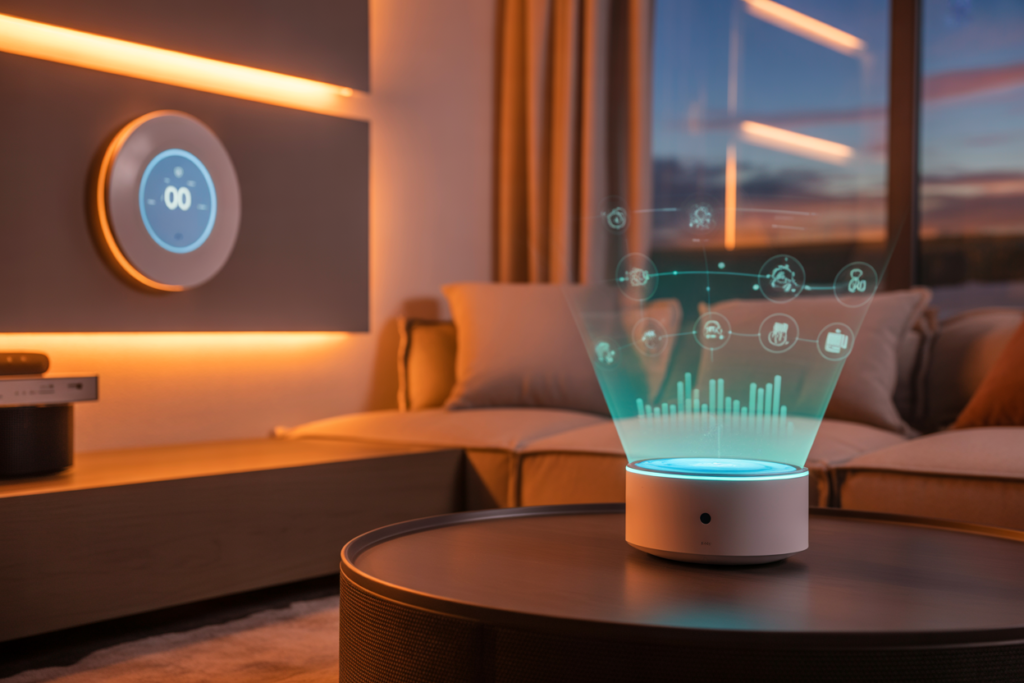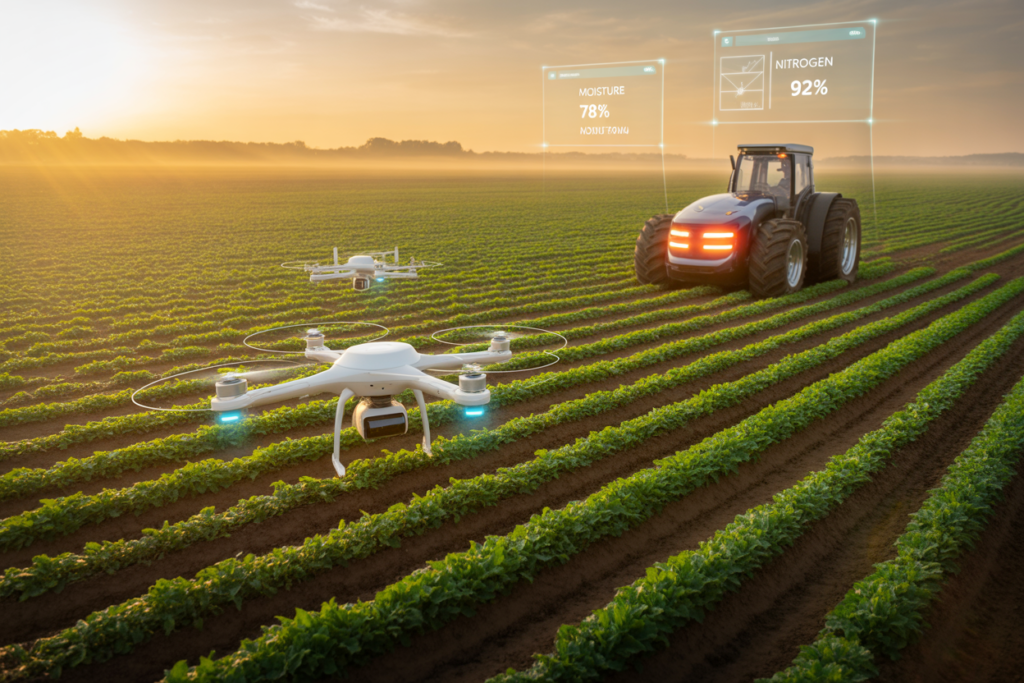IoT (Internet of Things) Solutions: Connecting the World for a Smarter Future
Introduction
The Internet of Things (IoT) has emerged as a transformative force, connecting billions of devices to create intelligent, data-driven ecosystems that enhance efficiency, convenience, and innovation across industries. From smart homes and cities to healthcare and agriculture, IoT solutions integrate sensors, connectivity, and artificial intelligence (AI) to enable real-time decision-making and automation. As of October 2025, the global IoT market is valued at $1.1 trillion, with projections to reach $3.3 trillion by 2030, according to Statista. Driven by advancements in 5G, edge computing, and AI, IoT is reshaping how we interact with the world. This article explores the latest IoT solutions, their applications, challenges, and the future they promise, while addressing societal and ethical implications.
The Fundamentals of IoT
What is the Internet of Things?
The Internet of Things refers to a network of interconnected devices—sensors, appliances, vehicles, and more—that communicate via the internet to collect, share, and act on data. IoT systems typically include:
- Devices/Sensors: Collect data like temperature, motion, or health metrics.
- Connectivity: Protocols like Wi-Fi, 5G, Zigbee, or LoRaWAN enable communication.
- Data Processing: Cloud or edge computing analyzes data for insights.
- Applications: Software platforms deliver actionable outcomes, such as adjusting a thermostat or alerting a doctor.
IoT solutions operate on a “sense-process-act” model, enabling automation and real-time responses.
The Evolution of IoT
IoT’s roots trace back to the 1990s with early machine-to-machine (M2M) communication, but the 2010s marked a boom with affordable sensors, cloud computing, and smartphone proliferation. By 2025, over 75 billion IoT devices are connected globally, per IoT Analytics, driven by 5G’s low latency and massive device capacity. Standards like Matter have improved interoperability, while AI enhances data analytics, making IoT solutions more scalable and intelligent.
Major IoT Solutions and Advancements
1. Smart Home Automation
IoT is revolutionizing homes by connecting devices like thermostats, lights, and security systems into cohesive ecosystems. In 2025, Amazon’s Alexa and Google Nest integrate with Matter, enabling seamless control across brands. Smart thermostats, like Ecobee’s Premium, use AI to optimize energy use, reducing bills by 20%. IoT-enabled appliances, such as Samsung’s Family Hub refrigerator, track inventory and suggest recipes based on user habits.
Applications:
- Convenience: Voice assistants automate tasks like lighting and climate control.
- Energy Efficiency: IoT devices monitor consumption, saving up to 15% on utilities.
- Security: Smart cameras and locks provide real-time alerts via 5G.

2. Industrial IoT (IIoT) and Industry 4.0
Industrial IoT is driving the fourth industrial revolution by connecting machinery, sensors, and systems in factories and supply chains. In 2024, Siemens deployed IIoT solutions in 100 factories, using 5G to connect 10,000+ sensors per site for real-time monitoring. Predictive maintenance, powered by AI, reduces downtime by 30% by detecting equipment issues before failures. IoT-enabled robots, like those from ABB, optimize production lines.
Applications:
- Predictive Maintenance: Sensors monitor equipment health, saving $500 billion annually, per McKinsey.
- Supply Chain Optimization: IoT tracks goods in real-time, improving logistics efficiency.
- Worker Safety: Wearable IoT devices monitor hazards, reducing accidents by 25%.
Case Study: In 2025, a German automotive plant used IIoT to synchronize robotic arms, increasing production efficiency by 20% and reducing energy use.
3. Smart Cities and Urban IoT
IoT solutions are transforming urban environments by optimizing infrastructure and services. In 2025, Singapore’s Smart Nation initiative used IoT sensors to manage traffic, reducing congestion by 15%. Smart grids, like those in Dubai, integrate IoT to balance energy loads, cutting waste by 10%. IoT-enabled waste bins signal when full, streamlining collection routes.
Applications:
- Traffic Management: Sensors optimize signal timings and reduce commute times.
- Environmental Monitoring: IoT tracks air quality and noise pollution in real-time.
- Public Safety: Connected cameras and drones enhance urban security.

4. Healthcare IoT (HealthTech)
IoT is revolutionizing healthcare through connected wearables, implants, and hospital systems. In 2025, Fitbit’s Sense 3 monitors heart rate, blood oxygen, and stress, syncing data to doctors via 5G. Smart hospital beds, like those from Hillrom, track patient vitals and alert staff to anomalies. IoT-enabled insulin pumps adjust dosages in real-time for diabetes patients.
Applications:
- Remote Monitoring: Reduces hospital readmissions by 20% through continuous data collection.
- Telemedicine: IoT devices enable real-time consultations with global specialists.
- Aging-in-Place: Sensors monitor seniors’ movements, supporting independent living.
Case Study: A 2024 UK pilot used IoT wearables to track elderly patients, reducing emergency visits by 18%.
5. Agriculture and Smart Farming
IoT solutions enhance agriculture by optimizing resources and boosting yields. In 2025, John Deere’s IoT-enabled tractors use sensors to monitor soil moisture and nutrient levels, improving crop output by 15%. Drones equipped with IoT sensors spray fertilizers precisely, reducing waste. Smart irrigation systems, like those from Netafim, adjust water flow based on weather data.
Applications:
- Precision Farming: IoT optimizes seed placement and fertilizer use.
- Livestock Monitoring: Wearable sensors track animal health and location.
- Supply Chain Transparency: IoT ensures traceability from farm to table.
6. 5G and Edge Computing Integration
5G’s low latency (1ms) and high capacity (1 million devices per km²) supercharge IoT solutions. In 2024, Qualcomm’s 5G IoT chipsets enabled real-time data processing for smart cities and factories. Edge computing, which processes data locally, reduces latency and cloud dependency. AWS’s IoT Greengrass platform, updated in 2025, supports edge analytics for faster decision-making.
Applications:
- Real-Time Analytics: Edge IoT processes data instantly for autonomous vehicles.
- Scalability: 5G supports massive IoT deployments in dense urban areas.
- Energy Efficiency: Local processing reduces data transmission energy by 30%.

7. Security and AI-Driven Analytics
IoT security is evolving with AI-driven threat detection. In 2025, Palo Alto Networks’ IoT security platform uses AI to identify anomalies in connected devices, preventing breaches. Blockchain integration ensures secure data sharing, particularly in healthcare and supply chains. AI analytics, like those in IBM’s Watson IoT, predict trends and optimize operations.
Impact:
- Cybersecurity: AI reduces IoT breach risks by 40%.
- Predictive Insights: Analytics improve operational efficiency in industries.
- Data Integrity: Blockchain ensures tamper-proof records.
Applications of IoT Solutions
1. Consumer Convenience
IoT enhances daily life through smart homes and wearables. Smart speakers like Amazon Echo control IoT ecosystems, while wearables like the Apple Watch monitor fitness and notifications, improving user productivity by 15%.
2. Industrial Efficiency
IIoT optimizes manufacturing and logistics. In 2025, General Electric’s Predix platform used IoT to reduce factory downtime by 25%, saving billions annually. IoT-enabled supply chains track goods in real-time, cutting delays.
3. Environmental Sustainability
IoT supports sustainability by optimizing resource use. Smart grids reduce energy waste, while IoT sensors in agriculture minimize water and fertilizer use, supporting global net-zero goals.
4. Healthcare Transformation
IoT enables remote patient monitoring and personalized care. In 2024, Philips’ HealthSuite IoT platform reduced hospital stays by 10% through connected devices. IoT also supports mental health with wearable stress trackers.
5. Urban Development
Smart cities use IoT to enhance livability. In 2025, Toronto’s Sidewalk Labs deployed IoT sensors for waste management and traffic control, improving urban efficiency by 20%.
Challenges in IoT Solutions
1. Security and Privacy
IoT devices are vulnerable to cyberattacks. A 2025 breach in a smart home platform exposed user data, highlighting the need for end-to-end encryption. Privacy concerns arise from constant data collection, requiring compliance with GDPR and CCPA.
2. Interoperability and Standards
Fragmented ecosystems hinder IoT adoption. While Matter improves compatibility, proprietary systems from Apple and Google create silos. In 2025, 30% of IoT users faced device integration issues, per Consumer Reports.
3. Scalability and Infrastructure
Deploying IoT at scale requires robust infrastructure. 5G adoption is uneven, with rural areas lagging. High costs for sensors and connectivity limit adoption in developing regions.
4. Energy Consumption and E-Waste
IoT devices consume significant energy, and short lifespans contribute to e-waste. In 2025, IoT devices generated 180,000 tons of e-waste, per Greenpeace, prompting calls for sustainable designs.
5. Data Overload
IoT generates massive data volumes, overwhelming processing systems. Edge computing mitigates this, but advanced analytics are needed to extract actionable insights.
The Future of IoT Solutions
1. 6G and Advanced Connectivity
By 2030, 6G will enable terabit speeds and ultra-low latency, supporting billions of IoT devices. Holographic communication and real-time AI analytics will transform smart cities and healthcare.
2. AI and Autonomous Systems
AI will make IoT fully autonomous, predicting needs without human input. For example, future smart homes could adjust settings based on weather, health, or schedules, powered by advanced AI like an evolved Grok.
3. Sustainable IoT
Eco-friendly IoT solutions will use biodegradable sensors and energy harvesting. In 2025, Bosch tested solar-powered IoT sensors, reducing energy use by 50%. Modular designs will extend device lifespans.
Prediction: By 2030, IoT is expected to contribute $15 trillion to the global economy, with healthcare and manufacturing as key sectors, per McKinsey.
Societal Implications
IoT solutions have the potential to:
- Enhance Accessibility: Support the elderly and disabled with connected health and home devices.
- Drive Economic Growth: Create jobs in IoT development, cybersecurity, and data analytics.
- Promote Sustainability: Optimize resources in agriculture, energy, and urban planning.
However, equitable access is critical to avoid digital divides. Ethical data use and sustainable manufacturing will ensure IoT benefits society responsibly.
Conclusion
IoT solutions are connecting the world in unprecedented ways, from smart homes to industrial automation and smart cities. Advancements in 5G, AI, and edge computing are making IoT more scalable, intelligent, and efficient. Despite challenges like security, interoperability, and e-waste, the future of IoT is bright, with 6G and autonomous systems on the horizon. As IoT continues to evolve, collaboration between innovators, policymakers, and consumers will ensure it delivers a smarter, more sustainable future.
Leave a Reply